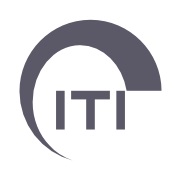Cone Beam Computed Tomography (CBCT) - Consensus Statements - Home
Contemporary Surgical and Radiographic Techniques, ITI CC 2013
Cone Beam Computed Tomography (CBCT)
General Comments
The aim of the review by Bornstein et al was to identify, review, analyze, and summarize available evidence on the use of CBCT imaging in pre- and postoperative dental implant therapy with regard to:
Consensus Statements
With respect to CBCT imaging in dental implant therapy and respective use guidelines, specific indications and contraindications for use, and the associated relative radiation dose risk, the following statements can be made:
- Current clinical practice guidelines for CBCT use in implant dentistry provide recommendations that are consensus-based or derived from non-standardized methodological approaches.
- Published indications for CBCT use in implant dentistry vary from preoperative analysis to postoperative evaluation, including complications. However, a clinically significant benefit for CBCT imaging over conventional two-dimensional methods resulting in treatment plan alteration, improved implant success, survival rates, and reduced complications has not been reported to date.
- CBCT imaging exhibits a significantly lower radiation dose risk than conventional CT, but higher than that of two-dimensional radiographic imaging. Different CBCT devices deliver a wide range of radiation doses. Substantial dose reduction can be achieved by using appropriate exposure parameters and reducing the field of view (FOV) to the actual region of interest (ROI).
Treatment Guidelines
- The clinician performing or interpreting CBCT scans for implant dentistry should take into consideration current radiologic guidelines.
- The decision to perform CBCT imaging for treatment planning in implant dentistry should be based on individual patient needs following thorough clinical examination.
- When cross-sectional imaging is indicated, CBCT is preferable over CT.
- CBCT imaging is indicated when information supplemental to the clinical examination and conventional radiographic imaging is considered necessary. CBCT may be an appropriate primary imaging modality in specific circumstances (eg, when multiple treatment needs are anticipated or when jawbone or sinus pathology is suspected).
- The use of a radiographic template in CBCT imaging is advisable to maximize surgical and prosthetic information.
- The FOV of the CBCT examination should be restricted to the ROI whenever possible.
- Patient- and equipment-specific dose reduction measures should be used at all times.
- To improve image data transfer, clinicians should request radiographic devices and third-party dental implant software applications that offer fully compliant DICOM data export.
Downloads and References
Share this page
Download the QR code with a link to this page and use it in your presentations or share it on social media.
Download QR code